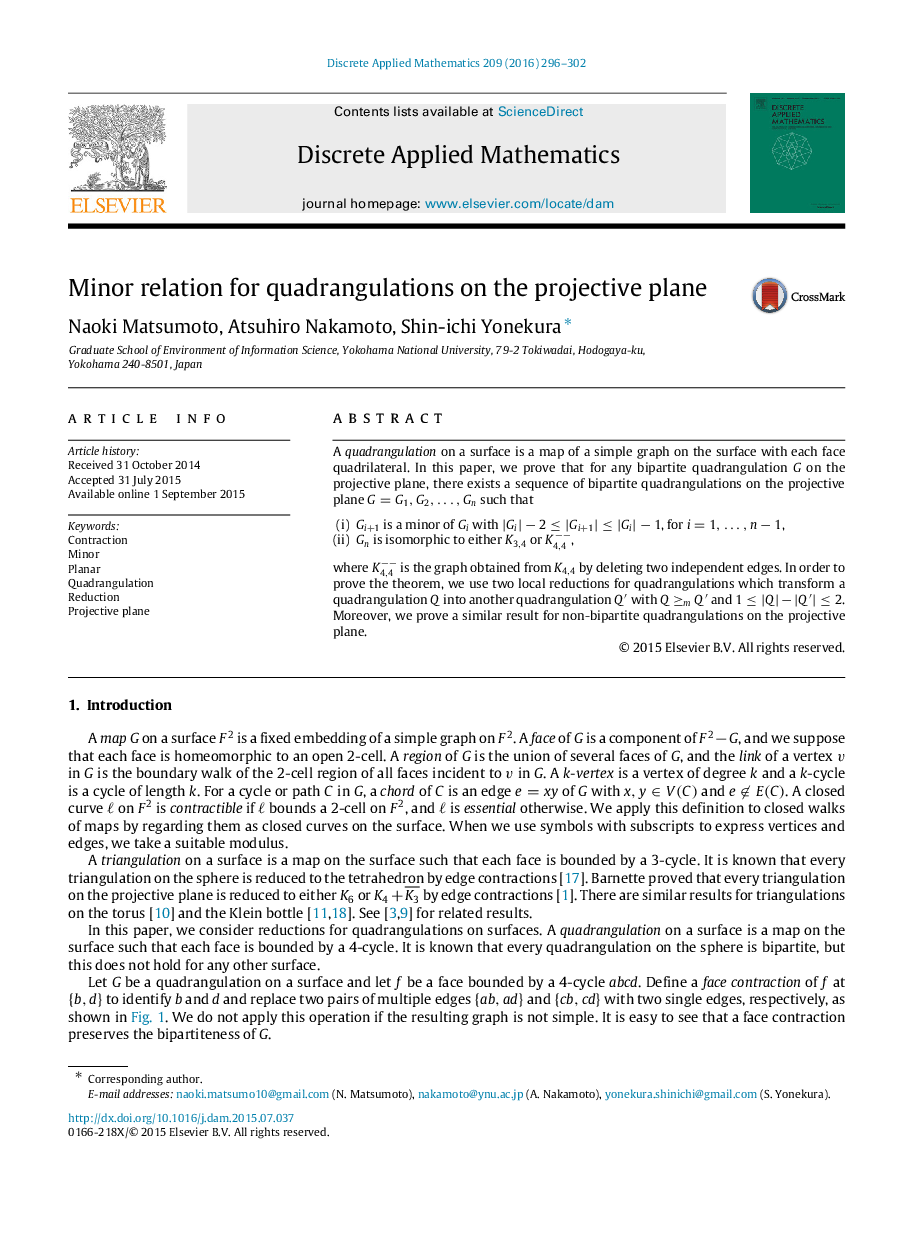| Article ID | Journal | Published Year | Pages | File Type |
|---|---|---|---|---|
| 418477 | Discrete Applied Mathematics | 2016 | 7 Pages |
A quadrangulation on a surface is a map of a simple graph on the surface with each face quadrilateral. In this paper, we prove that for any bipartite quadrangulation GG on the projective plane, there exists a sequence of bipartite quadrangulations on the projective plane G=G1,G2,…,GnG=G1,G2,…,Gn such that (i)Gi+1Gi+1 is a minor of GiGi with |Gi|−2≤|Gi+1|≤|Gi|−1|Gi|−2≤|Gi+1|≤|Gi|−1, for i=1,…,n−1i=1,…,n−1,(ii)GnGn is isomorphic to either K3,4K3,4 or K4,4−−, where K4,4−− is the graph obtained from K4,4K4,4 by deleting two independent edges. In order to prove the theorem, we use two local reductions for quadrangulations which transform a quadrangulation QQ into another quadrangulation Q′Q′ with Q≥mQ′Q≥mQ′ and 1≤|Q|−|Q′|≤21≤|Q|−|Q′|≤2. Moreover, we prove a similar result for non-bipartite quadrangulations on the projective plane.
